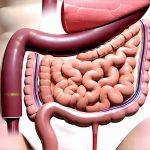Stomach pain coupled with nausea is an incredibly common experience, yet deciphering its cause can feel like navigating a labyrinth. Most often, it’s a temporary discomfort – perhaps stemming from something as simple as overindulging in food or experiencing mild stress. However, because these two symptoms frequently appear together, they can also signal more serious underlying issues that require medical attention. The human digestive system is remarkably complex, and the interplay between stomach pain and nausea reflects this intricacy. Understanding the potential reasons behind these combined sensations isn’t about self-diagnosing but rather about gaining a better awareness of your body and knowing when to seek professional guidance.
The sheer variety of possible causes can be daunting. From relatively benign conditions like food poisoning or viral gastroenteritis to more complex problems involving organs beyond the stomach, the list is extensive. The location, intensity, duration, and accompanying symptoms (like fever, diarrhea, vomiting, or blood in stool) all play crucial roles in narrowing down the possibilities. Importantly, context matters – what you ate recently, any medications you’re taking, your overall health history, and even your stress levels can provide valuable clues. This article will explore some of the most common reasons why stomach pain and nausea occur together, providing a framework for understanding these symptoms and emphasizing the importance of seeking appropriate medical care when necessary.
Common Gastrointestinal Causes
The digestive system is often at the heart of this symptom pairing. Many conditions directly affecting the stomach or intestines can manifest as both pain and nausea. One frequent culprit is gastroenteritis, commonly known as a “stomach bug.” This inflammation of the stomach and intestines is usually caused by a virus or bacteria, leading to symptoms like vomiting, diarrhea, abdominal cramps, and, naturally, nausea. Food poisoning falls into a similar category, triggered by consuming contaminated food containing toxins produced by bacteria (like Salmonella or E. coli) or viruses. The onset tends to be quicker with food poisoning than with viral gastroenteritis, but the symptoms are remarkably similar.
Beyond infections, certain dietary factors can contribute to both stomach pain and nausea. Food intolerances, such as lactose intolerance or gluten sensitivity, can cause digestive upset when the offending food is consumed. This isn’t necessarily an allergic reaction but rather a difficulty digesting specific components of food. Similarly, overeating, eating too quickly, or consuming fatty/greasy foods can overwhelm the digestive system, leading to discomfort and nausea. Irritable Bowel Syndrome (IBS) is another chronic gastrointestinal condition that frequently features abdominal pain, bloating, and nausea as core symptoms. The exact cause of IBS isn’t fully understood, but it’s thought to involve a complex interplay of factors including gut motility issues, visceral hypersensitivity, and psychological stress. When to ask for a motility scan and what it shows can help understand some of these issues.
Finally, more serious conditions like gastritis (inflammation of the stomach lining) or peptic ulcers can also present with these symptoms. Gastritis is often caused by H. pylori bacteria infection, long-term use of NSAIDs (nonsteroidal anti-inflammatory drugs), or excessive alcohol consumption. Peptic ulcers are sores that develop in the lining of the stomach or duodenum and can cause burning abdominal pain, nausea, and even vomiting blood. It’s important to remember these more severe causes require medical diagnosis and treatment. What doctors mean when they say your GI tests are ‘normal’ can provide clarity on diagnostic processes.
Beyond the Digestive System: Other Potential Sources
While gastrointestinal issues are often the primary suspects when experiencing both stomach pain and nausea, it’s crucial to recognize that other bodily systems can also be involved. The body is interconnected, and problems in one area can easily manifest as symptoms elsewhere. For example, kidney stones can cause severe abdominal or back pain that radiates towards the front of the abdomen, accompanied by nausea and vomiting. This happens because the intense pain triggers a vagal nerve response, leading to feelings of sickness.
Another often-overlooked possibility is heart-related issues. While chest pain is the classic symptom of a heart attack, some individuals, particularly women, may experience atypical symptoms like abdominal discomfort, nausea, and shortness of breath. This can be incredibly misleading, making it vital to seek immediate medical attention if you suspect a cardiac event. Migraine headaches are also known to cause nausea as a prominent symptom, and sometimes abdominal pain or digestive upset accompanies the headache phase. The neurological pathways involved in migraines can affect various bodily functions, leading to these diverse symptoms. GERD and Tingling Lips or Face: What It Might Indicate explores how seemingly unrelated symptoms can connect.
Finally, certain medications can induce both stomach pain and nausea as side effects. Chemotherapy drugs, antibiotics, and even some over-the-counter painkillers can disrupt the digestive system. If you suspect medication is the cause, discuss it with your doctor – they may be able to adjust the dosage or switch you to a different medication. What it means when reflux only happens during travel can help understand medication side effects and timing.
When to Seek Medical Attention
Determining whether stomach pain and nausea warrant a visit to the doctor isn’t always straightforward. In many cases, these symptoms will resolve on their own within 24-48 hours with rest and hydration. However, certain red flags should prompt immediate medical attention. Severe abdominal pain, especially if it’s sudden and intense, is a key warning sign. Similarly, persistent vomiting that prevents you from keeping down fluids can lead to dehydration and requires professional intervention. Look out for signs of dehydration such as decreased urination, dizziness, and extreme thirst.
- If you notice blood in your vomit or stool, seek immediate medical care.
- High fever (over 101°F) alongside these symptoms is also cause for concern, suggesting an infection.
- Difficulty breathing, chest pain, or severe weakness should be treated as a medical emergency.
- If the nausea and stomach pain are accompanied by jaundice (yellowing of the skin and eyes), it could indicate liver problems. When Normal GI Symptoms Might Mean Something More can help evaluate concerning symptoms.
It’s always better to err on the side of caution when dealing with these symptoms. A healthcare professional can accurately diagnose the underlying cause and recommend appropriate treatment, whether it’s rest and hydration, medication, or further investigation through tests like blood work, stool samples, or imaging scans. K31.9 — Stomach condition: What could it mean and what to do can help you prepare for such consultations. Don’t hesitate to seek help if you are worried, even if you aren’t sure what’s causing your symptoms. Your health is paramount, and early intervention can prevent complications and ensure a faster recovery. Nighttime Belly Pain in Kids: What It Could Mean offers additional insights into abdominal pain concerns.


















